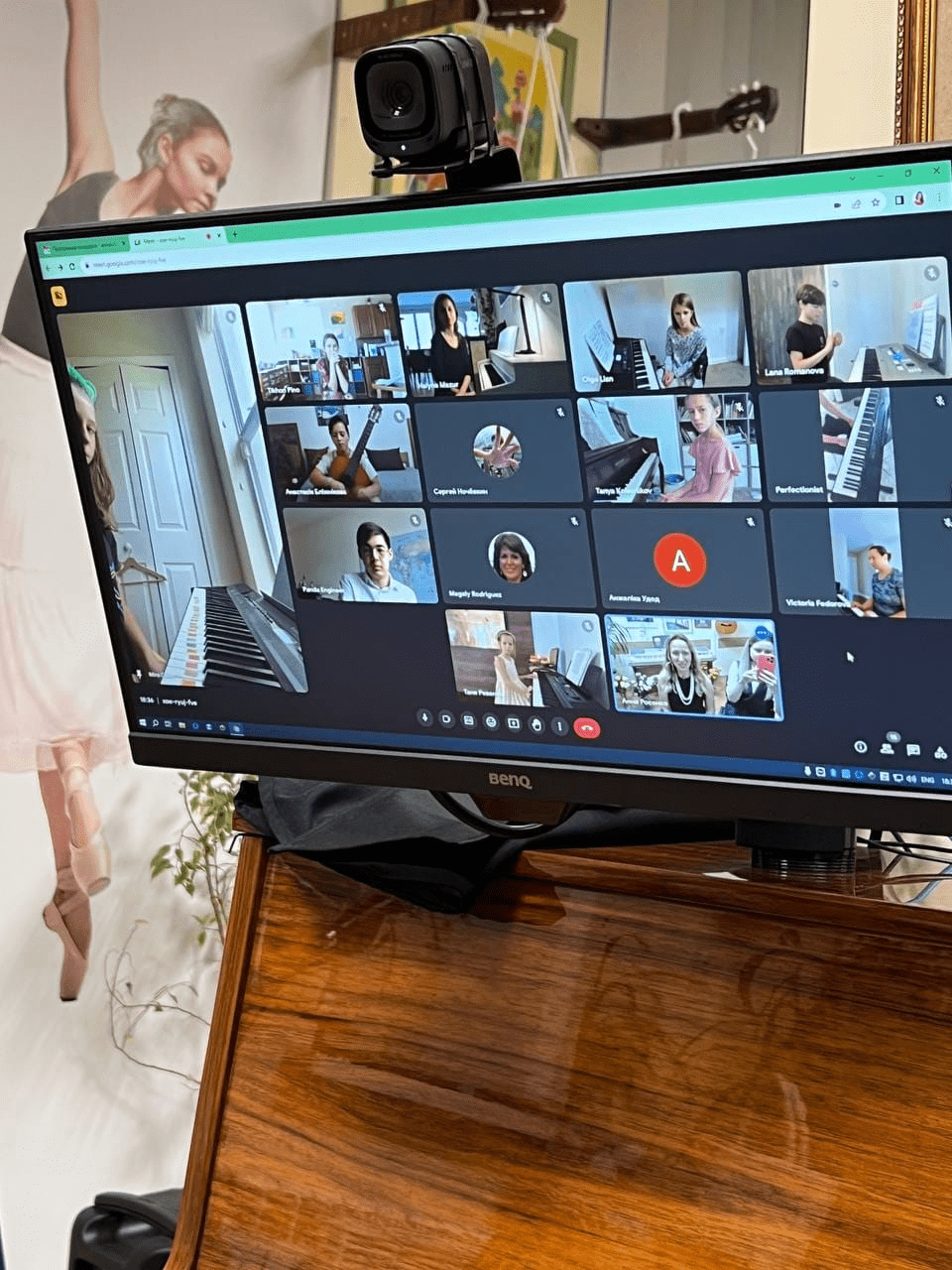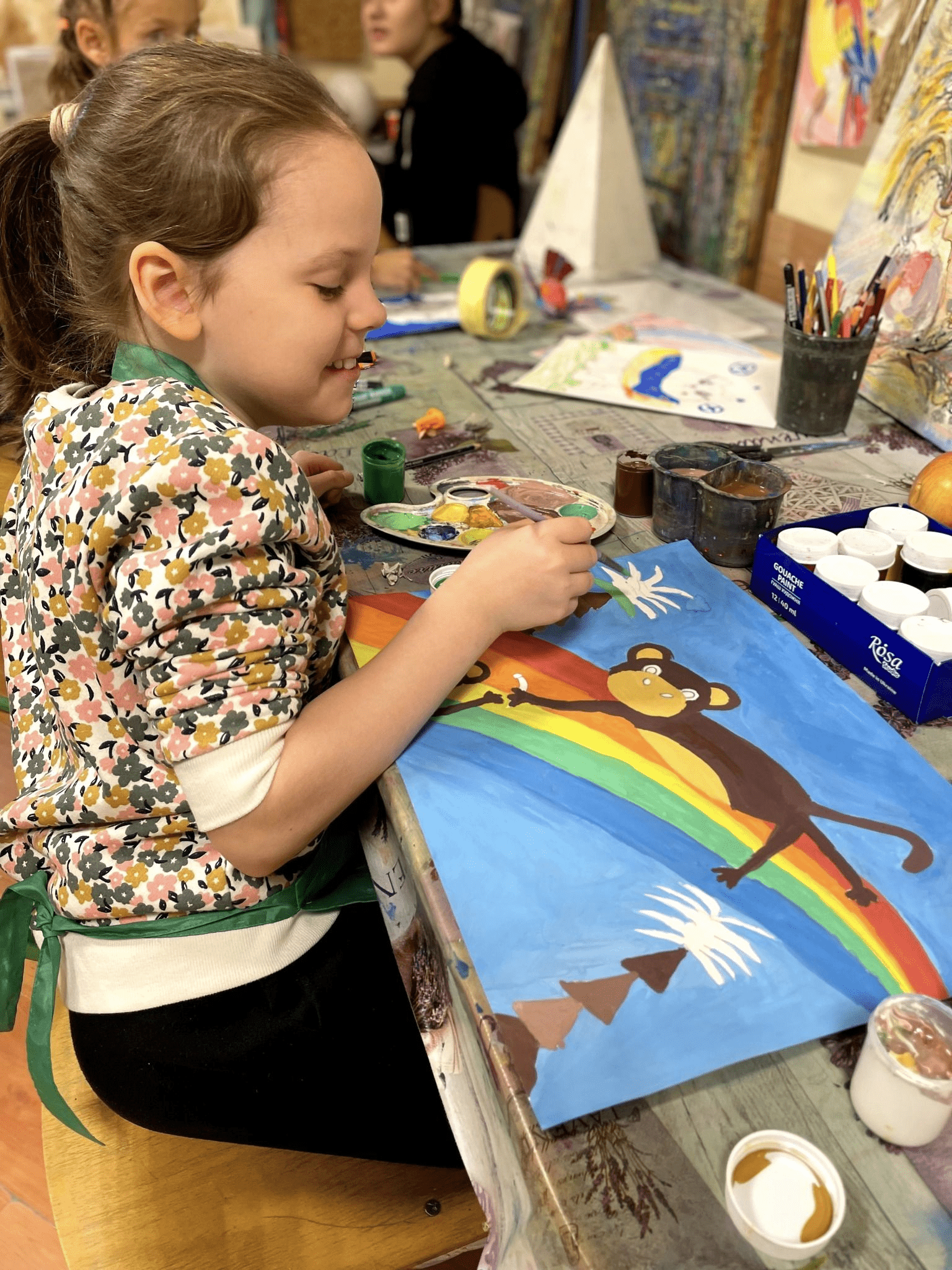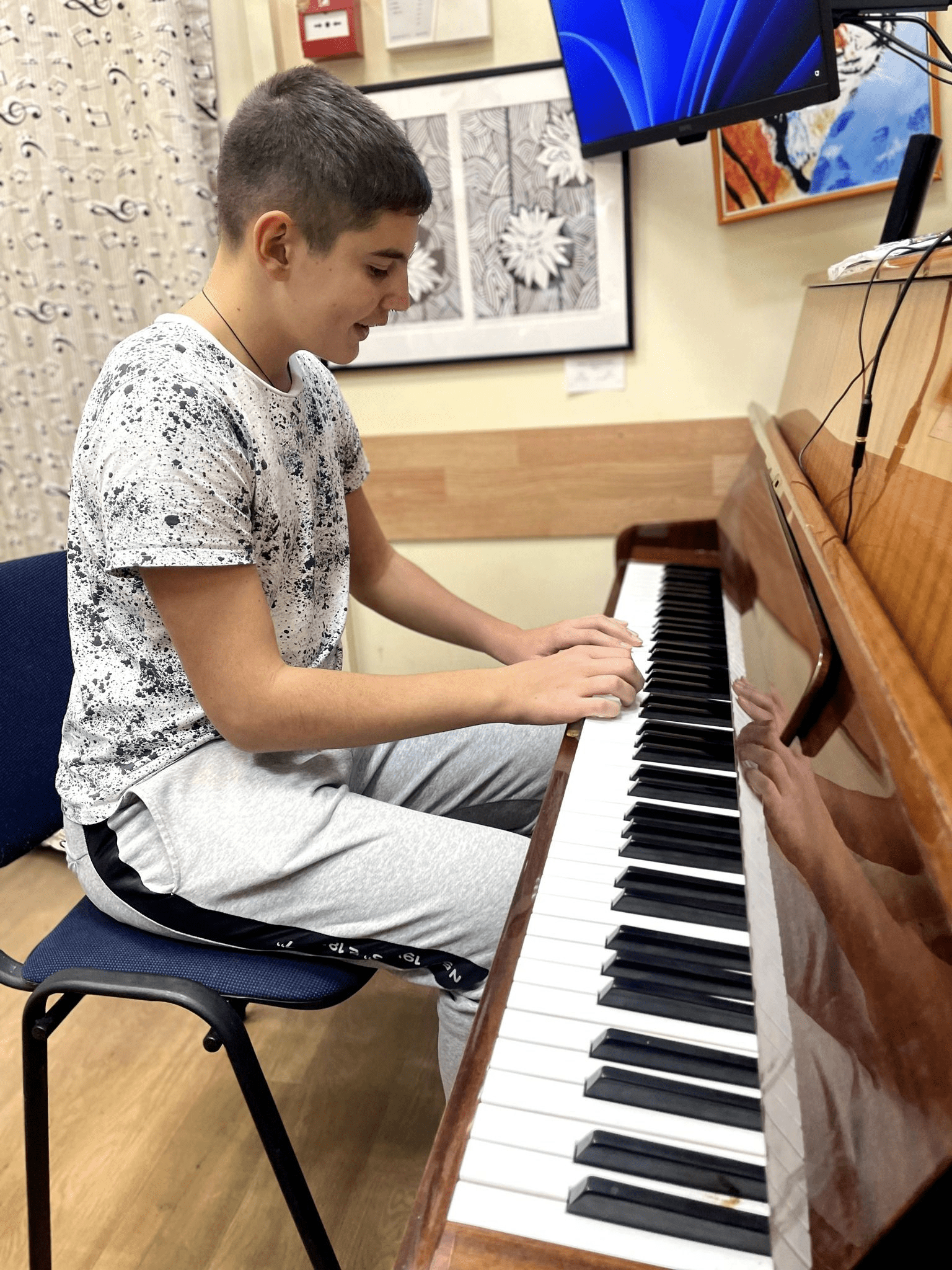

Individual


English,
Ukrainian

Online
Computer Graphics
Classes
On our online computer graphics course, you will quickly master various programs and techniques, creating bright and expressive digital artworks!












Individual

Duration

Instruction
English,
Ukrainian


Device with Camera and Microphone: A computer or tablet with a camera and microphone for participating in online lessons, and a stylus (pen for drawing on a tablet).
Software: For computer graphics lessons, you need to pre-download and install the software: for iOS tablets - Procreate, and for Android tablets - MediBang Paint Pro. Download and install the required program in advance before the lesson.

Headphones: Using headphones will improve sound quality and help you better hear the teacher’s explanations.

Independent Work: Helps better absorb lesson material.
Practice: At the beginner level, it is recommended to practice at home daily.
Enjoyment of the Process: Regular practice strengthens skills and brings joy from visible success.

Trial Lesson
If you want to order a trial lesson in computer graphics, you need to schedule and pay $6.00€5.00₴250.00.
The trial lesson is conducted individually and lasts for 45 minutes.

Subscription
If you enjoyed the trial lesson, you can purchase a subscription by making a prepayment for at least 4 lessons.
The price of a 4-lesson subscription is $56.00€46.72₴2333.32 (the cost of one lesson is $14.00€11.68₴583.33).
Payment must be made at least 24 hours before the lesson's start time.

Discounts
When you purchase 80 lessons or more, you can receive a discount of up to $736.00€613.20₴30672.76.
Course Overview
The online computer graphics course is designed for children from 8 years old and adults without age restrictions. In this course, you will learn to create expressive digital artworks using various techniques and tools. The training program includes beginner, intermediate, and advanced levels.
Computer graphics lessons last 45 minutes and are conducted individually. Our teachers provide instruction in Russian, Ukrainian, and English, allowing students to choose a convenient language. The schedule is individually tailored to accommodate each student's needs and preferences.
Online computer graphics lessons are conducted on platforms such as Google Meet and Zoom. Our instructors have higher art education and extensive experience, with many actively participating in exhibitions and workshops.
The frequency of lessons is customized for each student. We recommend holding lessons at least twice a week to ensure steady progress and avoid long breaks between sessions, which aids in better material retention and skill acquisition.
Students of our school participate in exhibitions, competitions, and workshops, earning diplomas and certificates that attest to their level of proficiency. Students also receive certificates upon completion of each module and level.
Teaching Methodology
The teaching methodology for computer graphics is an original Montessori Center program aimed at individual achievements for each student, suitable for both children and adults. Our methodology is based on setting specific goals from the beginning of the training. These goals include mastering various techniques and styles of digital art. Skill assessment occurs through participation in exhibitions and competitions, where successfully presenting work confirms the achievement of set goals.
Methodology Advantages
Clear Goals: Students understand their objectives and have clear benchmarks for achieving their goals in computer graphics.
Flexible Learning: The program allows students to progress based on their individual learning speed.
Practical Experience: Participation in exhibitions and competitions provides practical experience and the opportunity to apply learned skills.
Accessibility for All Ages: The methodology is suitable for both children and adults, ensuring universal and accessible education.
Continuous Development: After achieving all goals, students can continue to develop their skills, enhancing their mastery level.
Beginner Level
At the beginner stage, students learn the basics of working with various digital tools and programs. This period includes mastering basic techniques, creating simple compositions, and exploring different aspects of digital art. Upon completing this course, students can create elementary digital illustrations, possessing foundational skills.
Intermediate Level
At the intermediate level, students acquire all the essential skills needed to create more complex digital compositions. Special attention is given to developing techniques, confidence in creating digital artworks, and artistic expression. Artistic expression includes the ability to convey the emotional context of a work, making it more memorable.
Advanced Level
At the advanced level, students master complex techniques and styles of digital art. They study various programs, master numerous techniques, and develop skills in creating complex compositions.
Upon completing the computer graphics course, students can create intricate works, fully conveying the author's intent and artistic style. They can deeply understand and embody the essence of a work through their creations, using all mastered technical techniques. Students develop their artistic style and high-level technique.
Over years of study, a deep understanding of art theory and history is also formed, allowing students to professionally analyze and interpret artworks.
Course Goals
One of the main objectives of the computer graphics course is to master the technique of working with digital tools and programs, as computer graphics is a unique and modern form of art. For a beginner artist, this means developing skills in working with color, form, and composition, necessary for creating complex and expressive artworks. This requires regular practice and improvement of their artistic skills.
In addition, students learn various techniques that allow them to adapt the creation of digital illustrations depending on the context and desired effect.
Another important goal of training is developing skills in working with digital tools and forms. These skills are essential for every artist to create harmonious and expressive compositions. After achieving this goal, our students can independently create and analyze digital artworks inspired by various sources.
One of the course's goals is also to learn how to create illustrations in various genres and styles. This contributes to developing confidence in their artistic abilities, helps cope with nervousness when presenting their work in public, and allows them to evaluate personal progress in the context of other artists' creativity. The main goal of the classes is not competition but constant improvement and enjoyment from the process of creating digital art.
Benefits of Computer Graphics Lessons
Development of Technical Skills: Computer graphics lessons help students develop important technical skills such as using graphics tablets, image editing software, and creating digital illustrations. These skills are in high demand in the modern industry, opening up numerous career opportunities for students.
Enhancement of Creativity: Computer graphics require creative thinking and innovation. Creating digital illustrations helps develop the ability to generate original ideas and bring them to life in unique projects.
Flexibility in Working with Various Styles: Computer graphics lessons allow students to explore different styles and techniques, fostering flexibility in the creative process. Students can experiment with various approaches, from realism to abstraction, and find their unique style.
Improvement of Attention to Detail: Working with digital tools requires high precision and attention to detail. Students learn to pay attention to small details, which is crucial for creating high-quality and professional work.
Teamwork Skills: Many projects in the field of computer graphics require teamwork. Lessons help develop communication and collaboration skills, essential for successful interaction in a team.
Stress Relief and Increased Concentration: Creative activities such as computer graphics help relax and relieve stress. The process of creating digital art enhances concentration and attention, positively affecting overall emotional well-being.
Development of Visual Perception: Computer graphics lessons improve visual perception and understanding of composition, color, and form. These skills are valuable not only in art but also in everyday life, helping to better understand and appreciate the surrounding world.
Career Growth Opportunities: Proficiency in computer graphics skills opens up numerous career growth opportunities. Specialists in this field are in demand in industries such as advertising, film, gaming, and web design.
Relevance of Knowledge: Computer graphics are constantly evolving, and lessons help students stay updated with the latest trends and technologies. This ensures the relevance of their knowledge and skills in the job market.
Strengthening Self-Discipline: The learning process requires discipline and regular practice. Students learn to manage their time and set goals, helping to develop self-discipline and responsibility.
Personal Growth: Computer graphics lessons contribute to personal growth, enhancing confidence, self-analysis ability, and striving for self-improvement.
In conclusion, computer graphics lessons offer numerous benefits for both children and adults. They promote the development of technical and creative skills, improve attention to detail and concentration, and provide career growth opportunities.
News
How Computer Graphics Lessons Work
Equipment: For participating in online computer graphics classes, you will need a graphics tablet connected to a laptop or computer or a regular tablet with Android or iOS operating systems, along with a stylus. For beginners, a regular Android or iOS tablet is often best.
Internet Connection: A stable and fast internet connection is crucial for uninterrupted access to video lessons and online resources. It is recommended to check your internet speed before starting the classes.
Video Conferencing Platform: Classes are conducted via platforms such as Zoom or Google Meet. Install the necessary software in advance and ensure that all video and audio functions are working correctly.
Sound: Headphones with a microphone will help you hear the teacher better and reduce ambient noise during the lesson.
Lighting and Workspace: Ensure your workspace is well-lit. Bright, diffused light will help avoid screen glare and reduce eye strain.
Receiving the Lesson Link: The link to the online session will be sent to you in advance via email or your preferred messenger. Ensure that you receive the link a day before the lesson starts.
Lesson Materials: Software: Install necessary graphic design software—Procreate for iOS tablets, and MediBang Paint Pro for Android tablets. Download and install the required software before the lesson. Accessories: Prepare your graphics tablet and connect it to your computer or laptop. If using a regular tablet, ensure it is fully charged. Workspace: Make sure your desk is comfortable and uncluttered to create optimal learning conditions.
Workspace Setup: Device Placement: Position your computer or laptop so that the camera and microphone are facing you. This is crucial for interactive sessions with your teacher. Technical Testing: Enter the video conferencing application via the provided link 5-10 minutes before the lesson starts. Check that your camera, microphone, and internet connection are functioning without interruptions.
These steps will help you optimally prepare for your upcoming computer graphics lesson.
Instructions and Feedback: Your teacher will provide detailed instructions on using various graphic design programs and tools. You will receive valuable feedback that will help develop your technical skills and creative vision.
Ask Questions: Do not hesitate to ask your teacher about any difficulties you encounter or any nuances in using the programs. The teacher is there to help you resolve all your queries.
Practice: The main part of the lesson will be dedicated to practical work in graphic editors. You will create your own projects while the teacher monitors your progress and suggests ways to improve your work.
Teacher Demonstrations: The teacher will demonstrate graphic project creation in real-time, explaining the process and sharing tips for achieving the best results in digital illustration.
Lesson Conclusion: At the end of the session, you will discuss the techniques learned, receive assignments for independent practice, and talk about plans for future lessons.
Materials for Independent Work: The teacher will provide you with guidelines on using graphic tools, examples of successful projects, and additional resources for in-depth study of computer graphics.
We are confident that online computer graphics lessons will help you comfortably and effectively master the necessary skills. Your learning experience will be engaging and productive!
Computer Graphics Teachers

Kateryna Romaniuk
Computer Graphics, Painting, Modeling and Sculpture

Elena Stupak
Computer Graphics, Painting, Modeling and Sculpture, Animation

Victoria Grigoryeva
Computer Graphics, Painting, Modeling and Sculpture
Computer Graphics Course Program
 Beginner
level
Beginner
level
Age: from 7 years old
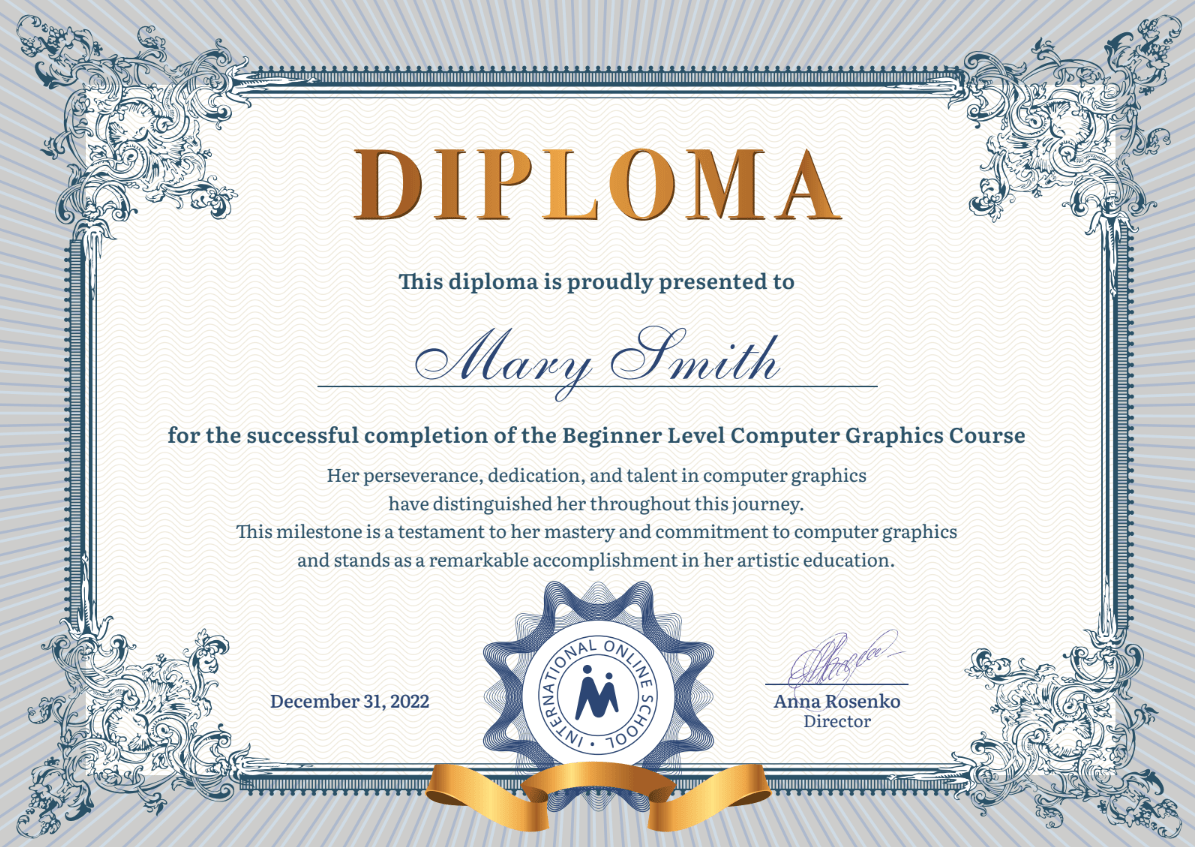
Modules
Introduction to computer graphics: getting acquainted with the interface of basic graphic editors.
Basics of working with shapes and colors: creating simple graphic works (shapes, patterns, ornaments). Introduction to tools: brushes, fill, gradient. Creating simple images based on templates.
Learning layers, tools, and basic functions. Creating works using primary graphic editors.
Basics of color theory in computer graphics: practicing color mixing, working with gradients and palettes.
Creating simple illustrations using geometric shapes and textures.
Participation in an online competition.

 Intermediate
level
Intermediate
level
Age: from 10 years old

Modules
Basics of pixel art: creating simple pixel images (characters, landscape elements).
Creating a series of works on given themes: nature, fairy tale plots, simple characters.
Studying various styles in computer graphics: realism, minimalism, pixel art, vector graphics. Practicing creating works in the chosen style.
Participation in illustration competitions or exhibitions.

 Advanced
level
Advanced
level
Age: from 12 years old

Modules
Basics of vector graphics: working with vector images. Creating illustrations on given themes, using textures, filters, and effects to enhance the works.
Studying advanced techniques in graphic editors: working with masks, adjustment layers, and complex tools.
Creating concept art for characters and environments for games and animations. Practicing digital painting. Developing your own project: creating a series of illustrations, animations, or 3D models.
Preparing and holding an exhibition of works, creating a portfolio. Participation in competitions and exhibitions.

The computer graphics course program covers all key aspects of digital art, from basics to advanced techniques, providing students with the opportunity to develop skills in various areas of computer graphics. The inclusion of theoretical elements, practice, and working with different graphic programs ensures comprehensive and in-depth learning. This program fosters the development of technical skills, creative thinking, and self-expression, preparing students for advanced levels in the field of digital art.
Start your learning journey! Sign up for a trial lesson today!
Course Schedule
We teach every day, including weekends
Contact Us

Your order "Subscription"
Course
Your order "Trial Lessons"
Course
Your order "Gift Card"
Course
Lesson Format
Online
Individual
Lesson Duration
45 min
Number of Lessons
8
Lesson Price
14.00 USD
Promo Code
Discount
1 USD
Lesson Format
Online
Individual
Lesson Duration
45 min
Number of Lessons
8
Lesson Price
14.00 USD
Promo Code
Discount
1 USD
Lesson Format
Online
Individual
Lesson Duration
45 min
Number of Lessons
8
Lesson Price
14.00 USD
Promo Code
Discount
1 USD
Total
1 USD
0.00 USD
Total
2 USD
Total
1 USD
3 USD
By confirming the order, I accept the terms of:
Buy a Subscription
Buy Trial lessons
Buy a Gift card
Select purchase
Lessons Format
Select the Number of Lessons in the Subscription
Number of lessons
Student
Select a course for a gift certificate
Select a course
Lessons Format
Select the number of lessons for a gift certificate
Number of lessons
Enter the details of the gift certificate recipient
Recipient details
Trial lessons
Lessons selected: 0
Lessons Format
Student
The subscription can be used for any course
The subscription can be used for any course
Student Reviews of the Course
Pedro R.





Наталья Л.





Michael T.





Laura M.





Ольга В.





David H.





Maria





Анна Сергеевна





John P.





Елена К.





Frequently Asked Questions (FAQ)
Helpful Articles

The History of Computer Graphics: From Pixels to 3D
Computer graphics have come a long way since their inception, undergoing significant changes and improvements. The history of computer graphics...

How Computer Graphics Develop Children’s Creative Abilities
Computer graphics are not only a modern tool for creating visual effects but also a powerful way to develop creative...
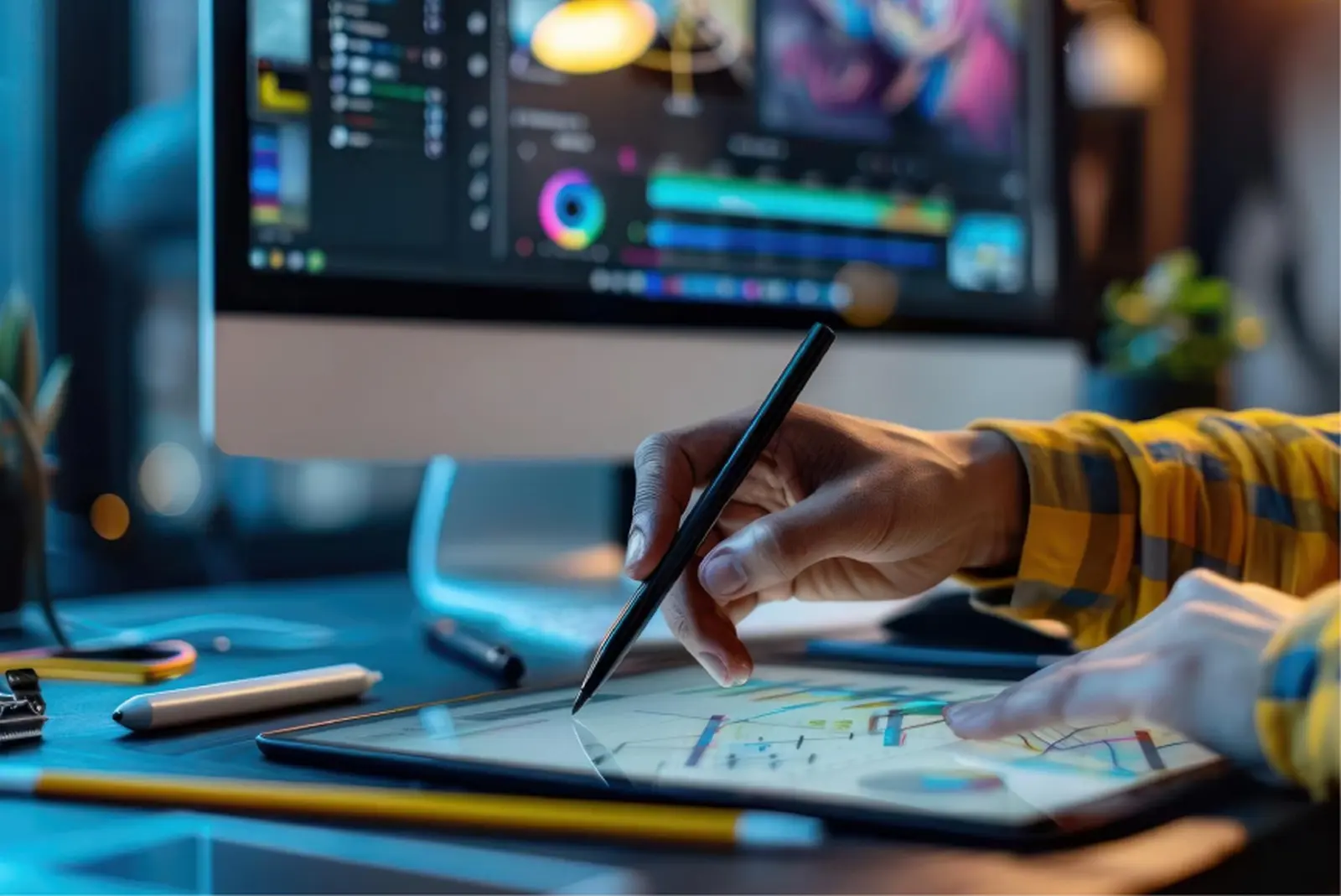
Famous Computer Graphics Artists and Their Works
Computer graphics have become a significant part of modern art, design, and media production. Many talented artists have made substantial...
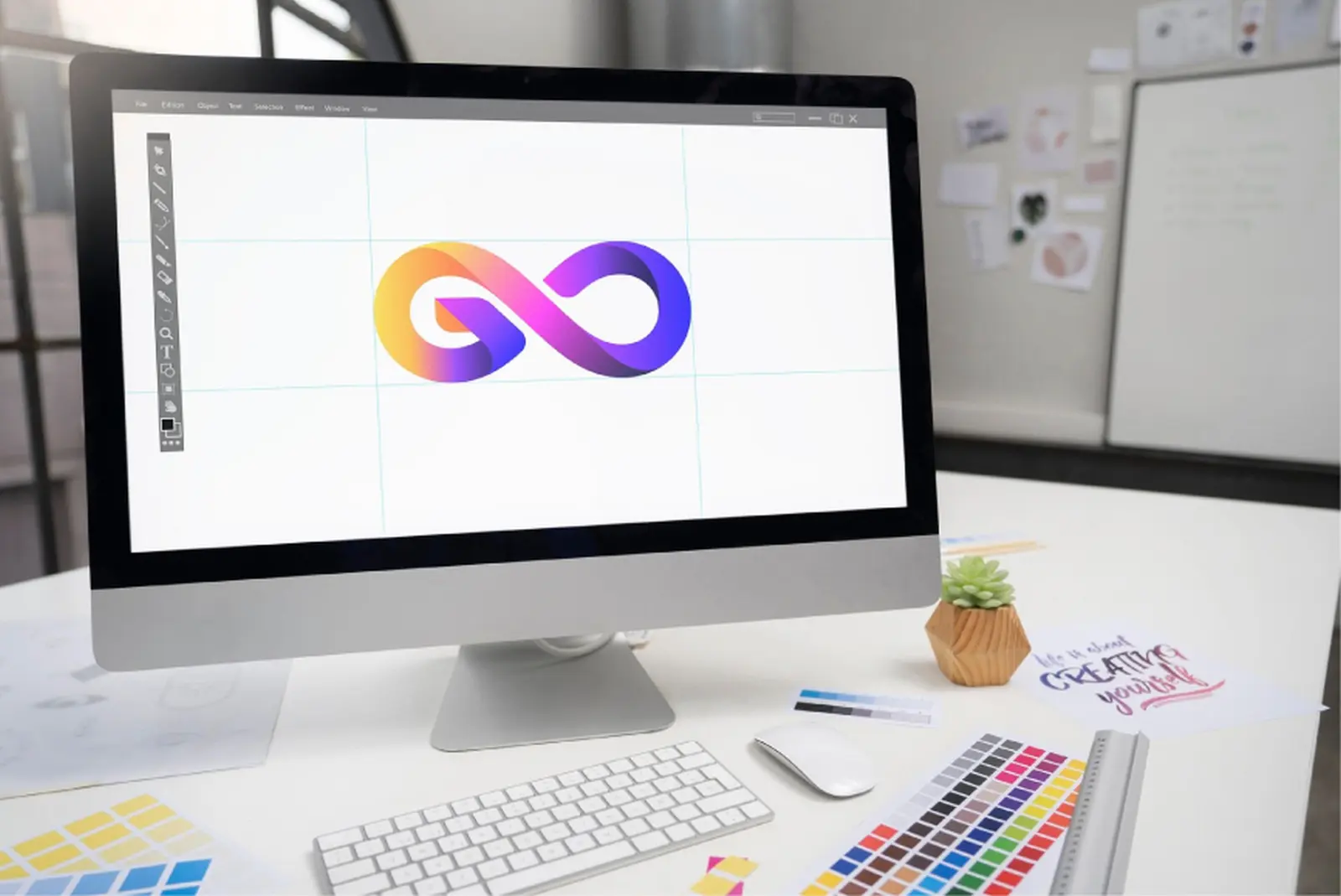
Basics of Computer Graphics: A Beginner’s Guide
Computer graphics is an exciting and multifaceted field that involves creating and editing images and animations using computer technologies. If...

Computer Graphics for Adults: Hobby or Profession?
Computer graphics is a field that encompasses a wide range of possibilities, from creating stunning visual effects and animations to...

Modern Computer Graphics Techniques: What Beginners Need to Know
Computer graphics is a rapidly evolving field that encompasses a wide range of technologies and methods. From creating 2D illustrations...

The Impact of Computer Graphics on Art and Culture
Computer graphics is a powerful tool that has significantly transformed the landscape of art and culture. Since its inception, it...
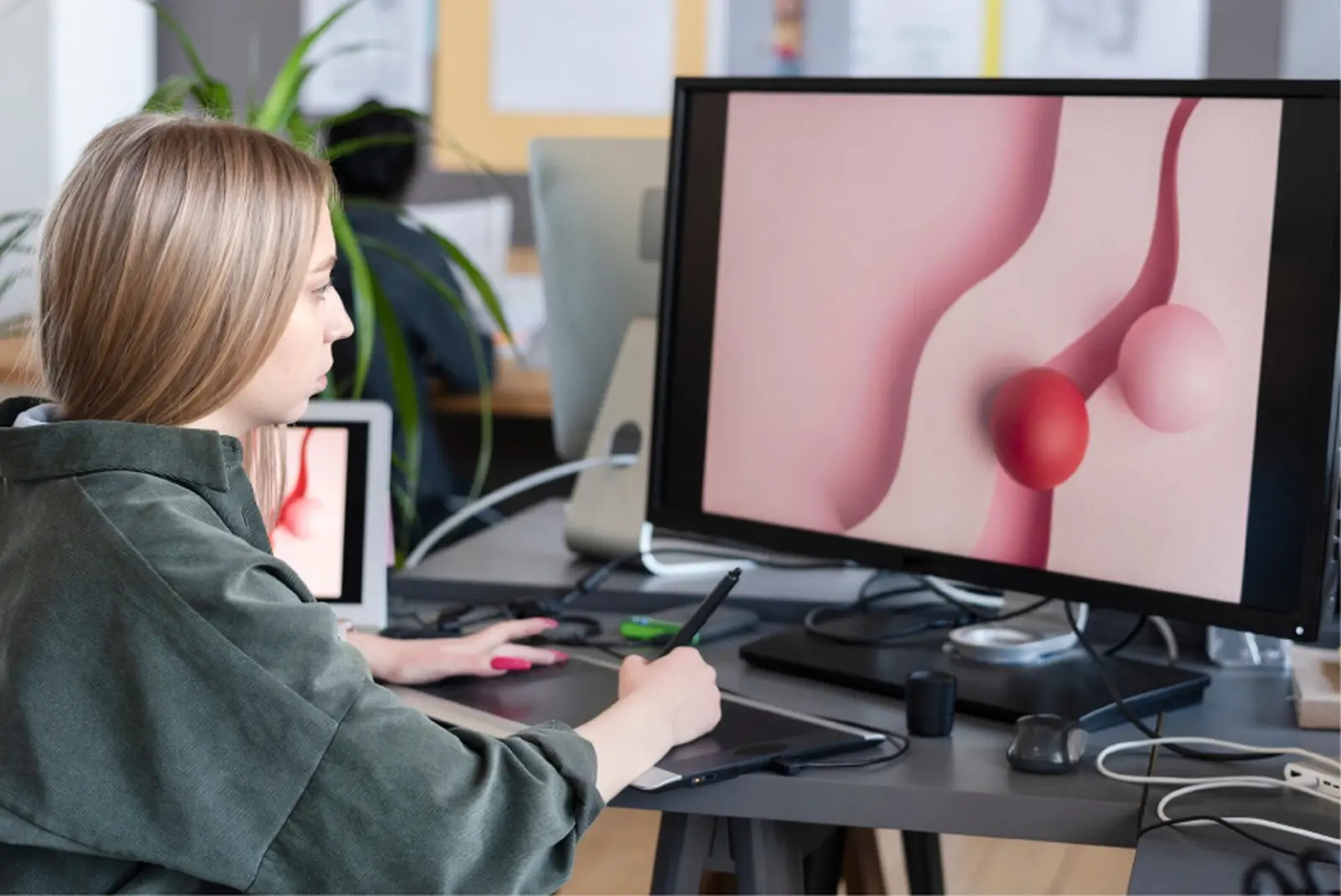
How to Create Your First 3D Model: A Step-by-Step Guide
Creating 3D models is an exciting process that allows you to bring your ideas to life and visualize them in...
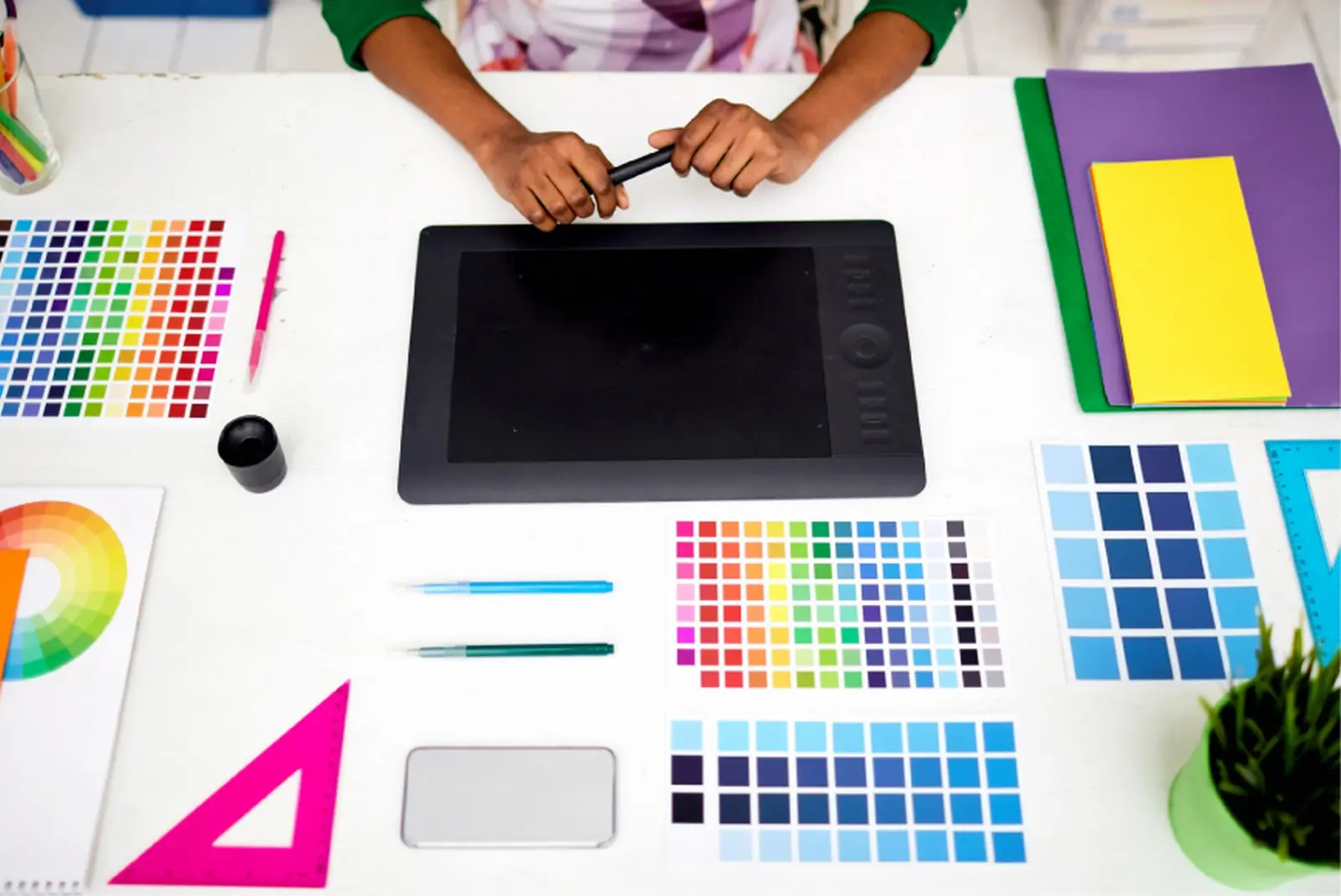
Top 10 Programs for Creating Computer Graphics
Computer graphics cover a broad range of applications—from creating illustrations and logos to animations and photorealistic 3D models. To succeed...
Gallery

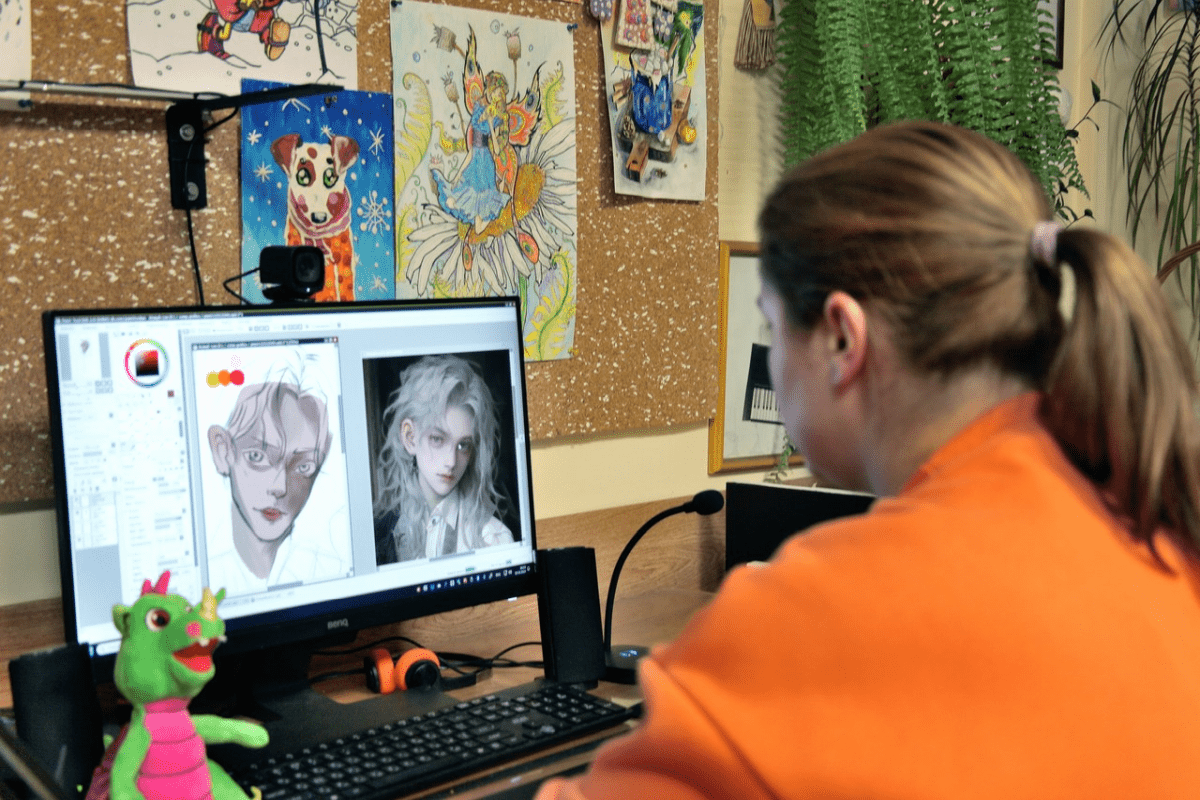


Popular Courses

Painting
Painting




Modeling and Sculpture
Modeling and Sculpture




Computer Graphics
Computer Graphics




Piano
Piano




Singing
Singing




Classical Guitar
Classical Guitar




Flute
Flute




English
English




Russian
Russian




Ukrainian
Ukrainian




Spanish
Spanish




German
German




Japanese
Japanese




Contemporary Dance
Contemporary Dance




Math
Math



How does a Montessori Center work
Watch Video
Watch Video






